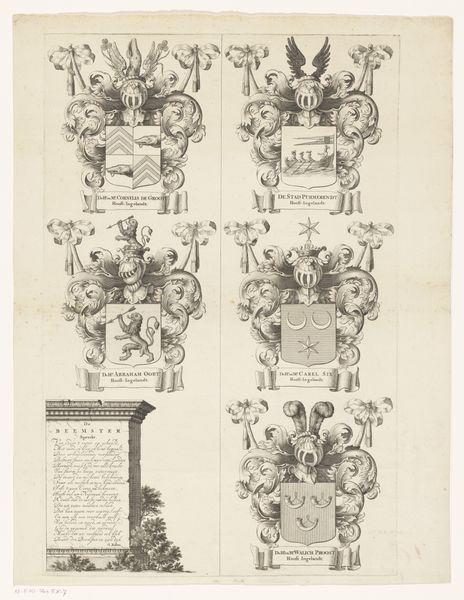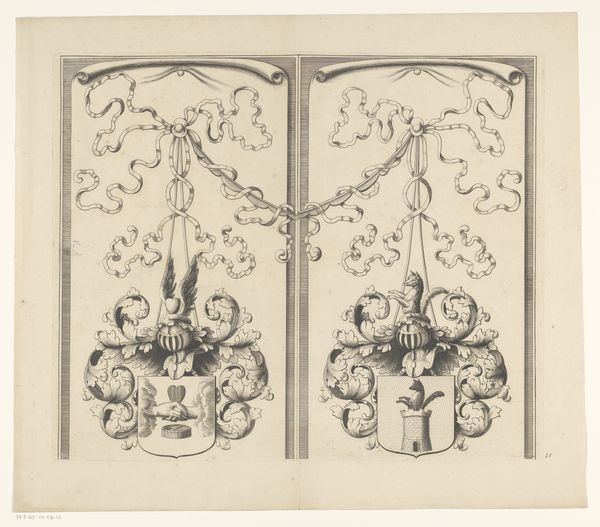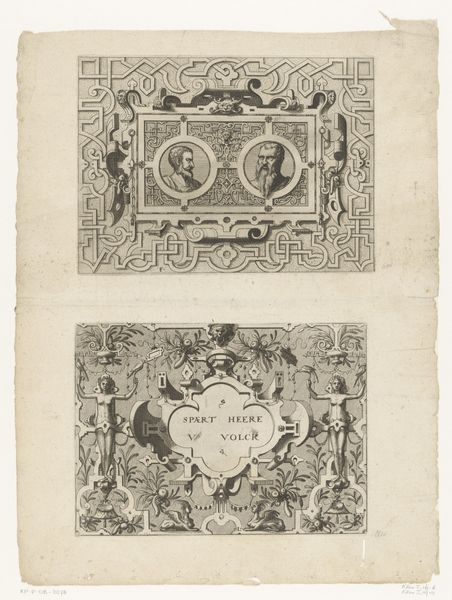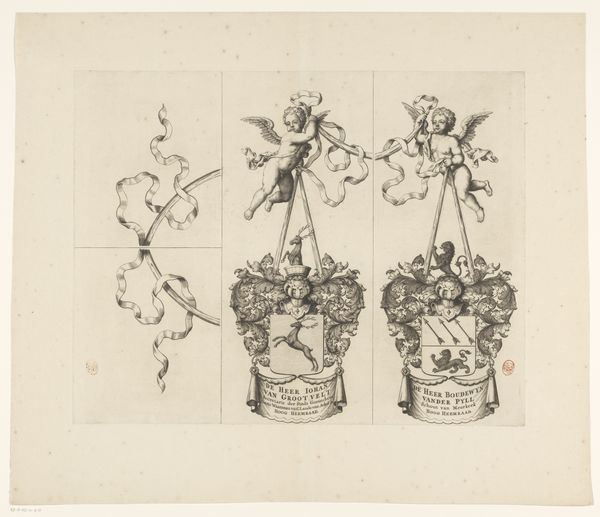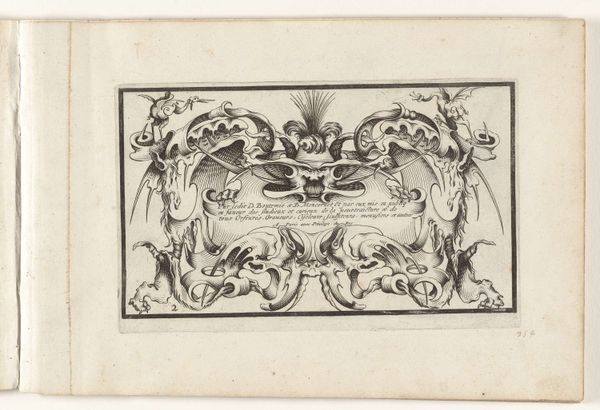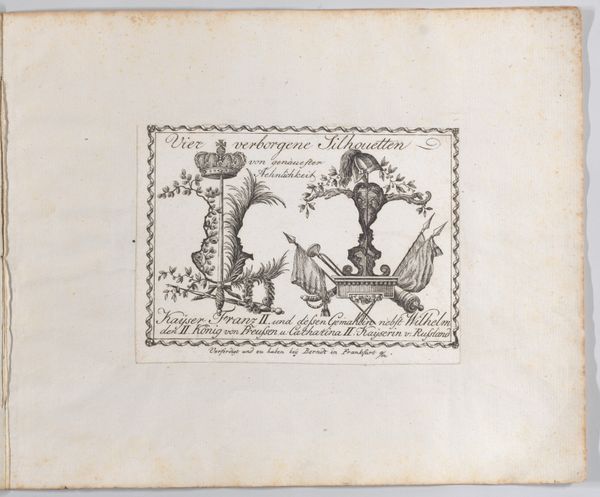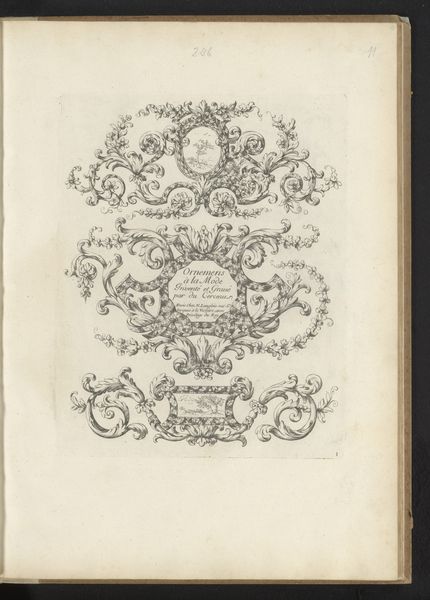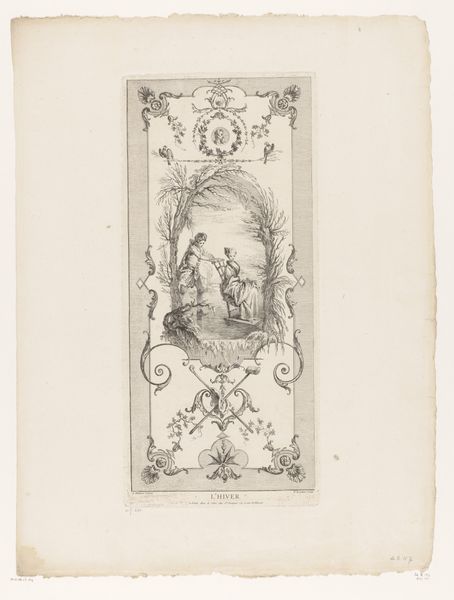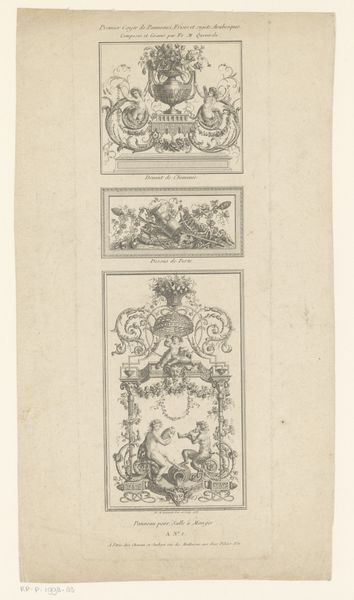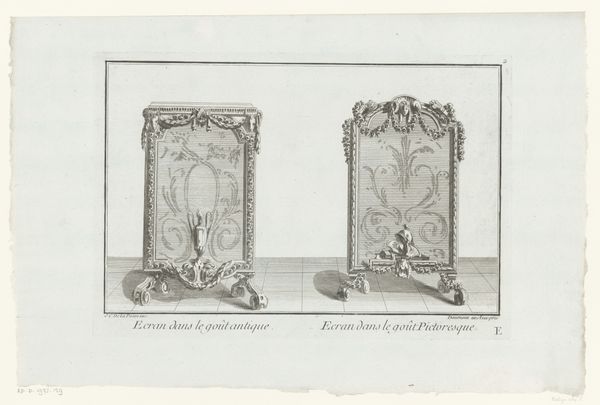
Kaart van het Hoogheemraadschap van de Krimpenerwaard (deel wapenrand) 1683
0:00
0:00
johannesleupenius
Rijksmuseum
graphic-art, print, engraving
#
graphic-art
#
dutch-golden-age
#
ink paper printed
# print
#
old engraving style
#
geometric
#
pen-ink sketch
#
line
#
decorative-art
#
engraving
Dimensions: height 446 mm, width 528 mm
Copyright: Rijks Museum: Open Domain
This copperplate engraving was made by Johannes Leupenius, likely in the late 17th century. We see two crests, each topped by banners naming a local official. Below, swirling decorative elements frame heraldic shields, one bearing a goose, the other three raindrops. Engraving is an indirect process, requiring careful transfer of a design onto a prepared metal plate, into which the lines are then incised. The plate would have been inked, then pressed onto paper – a labor-intensive method capable of producing many identical images. It is a print, which speaks to a moment of early information technology, capable of disseminating images on a mass scale. Notice the sharp, definitive quality of the lines in the image. This is a direct outcome of the process, giving the image a formal, precise character. In this context, the engraving’s replicability and graphic legibility were undoubtedly seen as virtues. As always, the making matters. Without understanding it, we can’t fully appreciate the object.
Comments
No comments
Be the first to comment and join the conversation on the ultimate creative platform.

